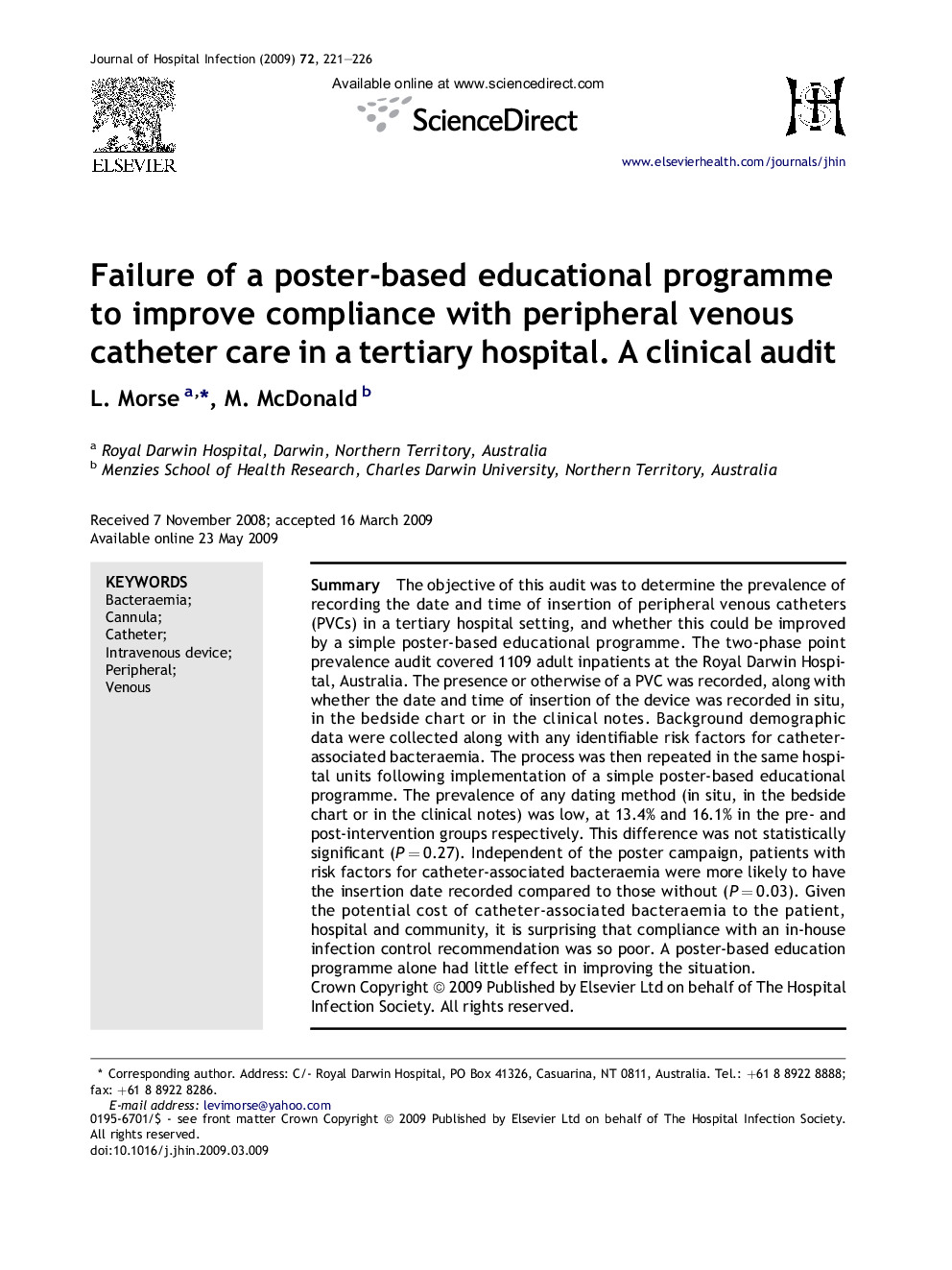| Article ID | Journal | Published Year | Pages | File Type |
|---|---|---|---|---|
| 3373011 | Journal of Hospital Infection | 2009 | 6 Pages |
SummaryThe objective of this audit was to determine the prevalence of recording the date and time of insertion of peripheral venous catheters (PVCs) in a tertiary hospital setting, and whether this could be improved by a simple poster-based educational programme. The two-phase point prevalence audit covered 1109 adult inpatients at the Royal Darwin Hospital, Australia. The presence or otherwise of a PVC was recorded, along with whether the date and time of insertion of the device was recorded in situ, in the bedside chart or in the clinical notes. Background demographic data were collected along with any identifiable risk factors for catheter-associated bacteraemia. The process was then repeated in the same hospital units following implementation of a simple poster-based educational programme. The prevalence of any dating method (in situ, in the bedside chart or in the clinical notes) was low, at 13.4% and 16.1% in the pre- and post-intervention groups respectively. This difference was not statistically significant (P = 0.27). Independent of the poster campaign, patients with risk factors for catheter-associated bacteraemia were more likely to have the insertion date recorded compared to those without (P = 0.03). Given the potential cost of catheter-associated bacteraemia to the patient, hospital and community, it is surprising that compliance with an in-house infection control recommendation was so poor. A poster-based education programme alone had little effect in improving the situation.
